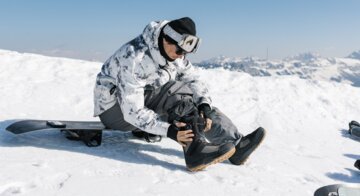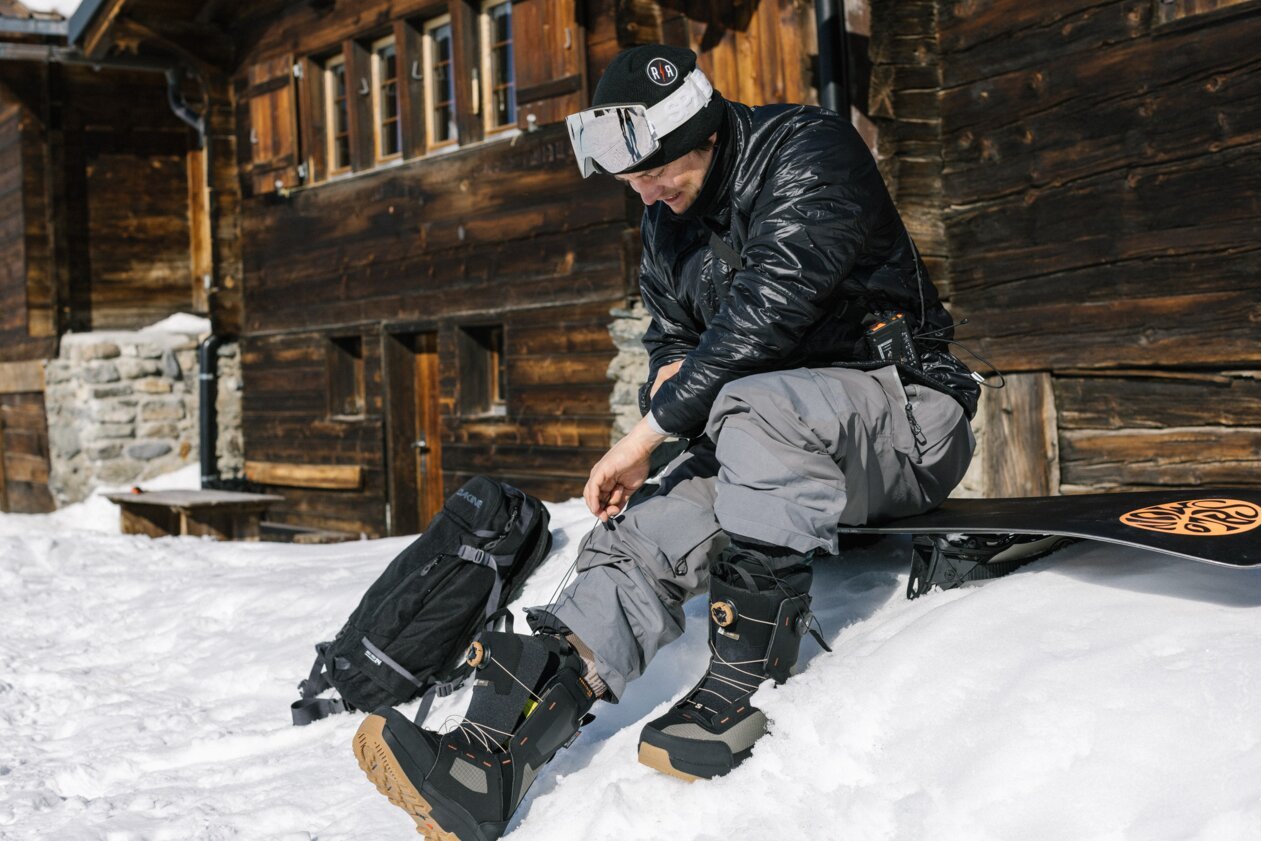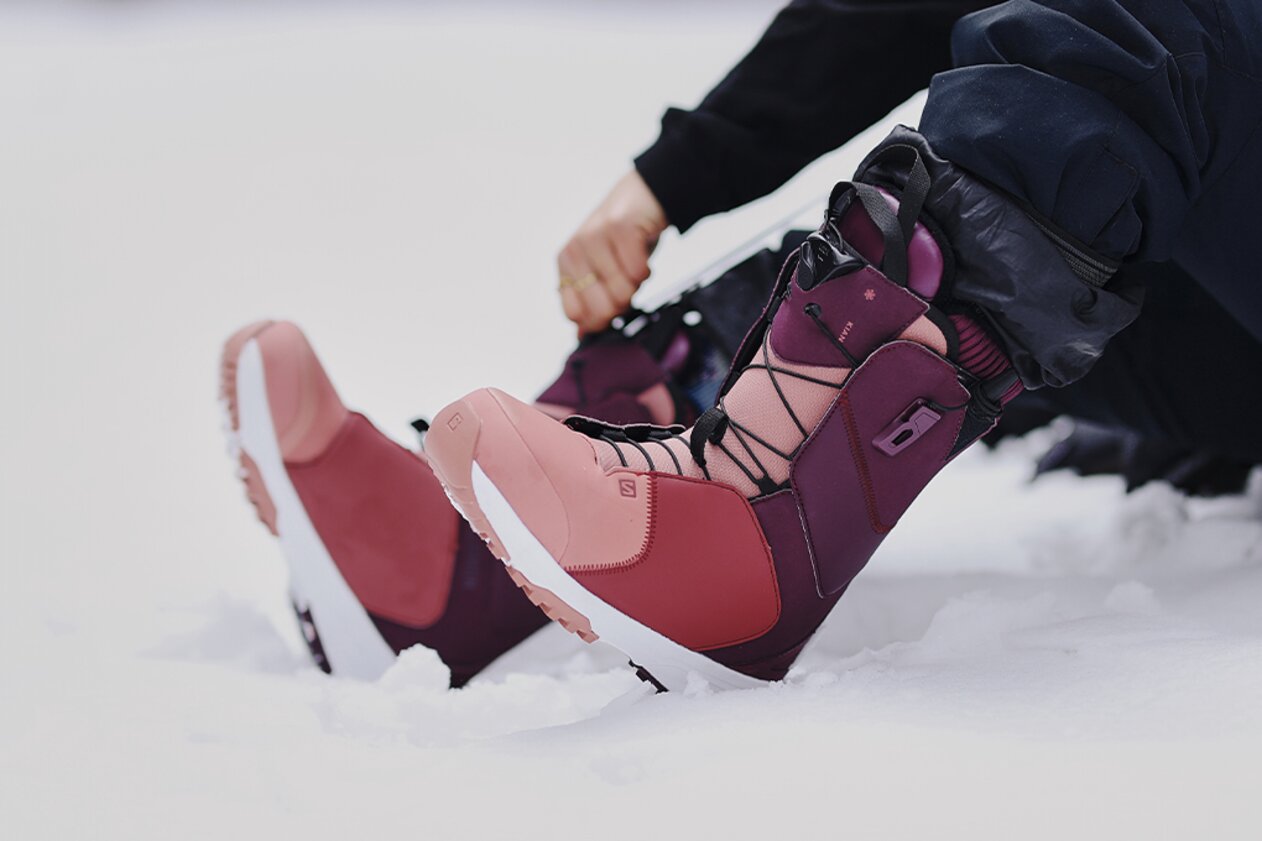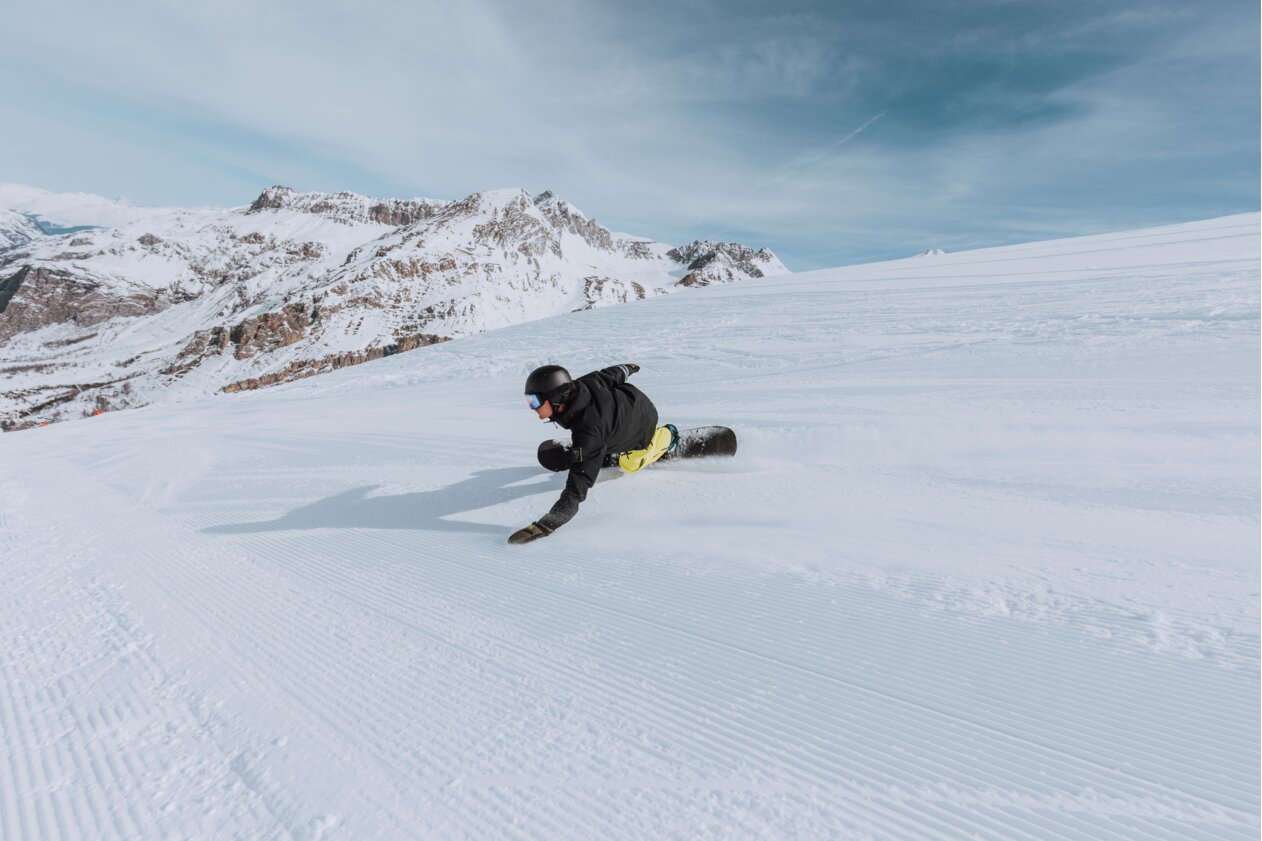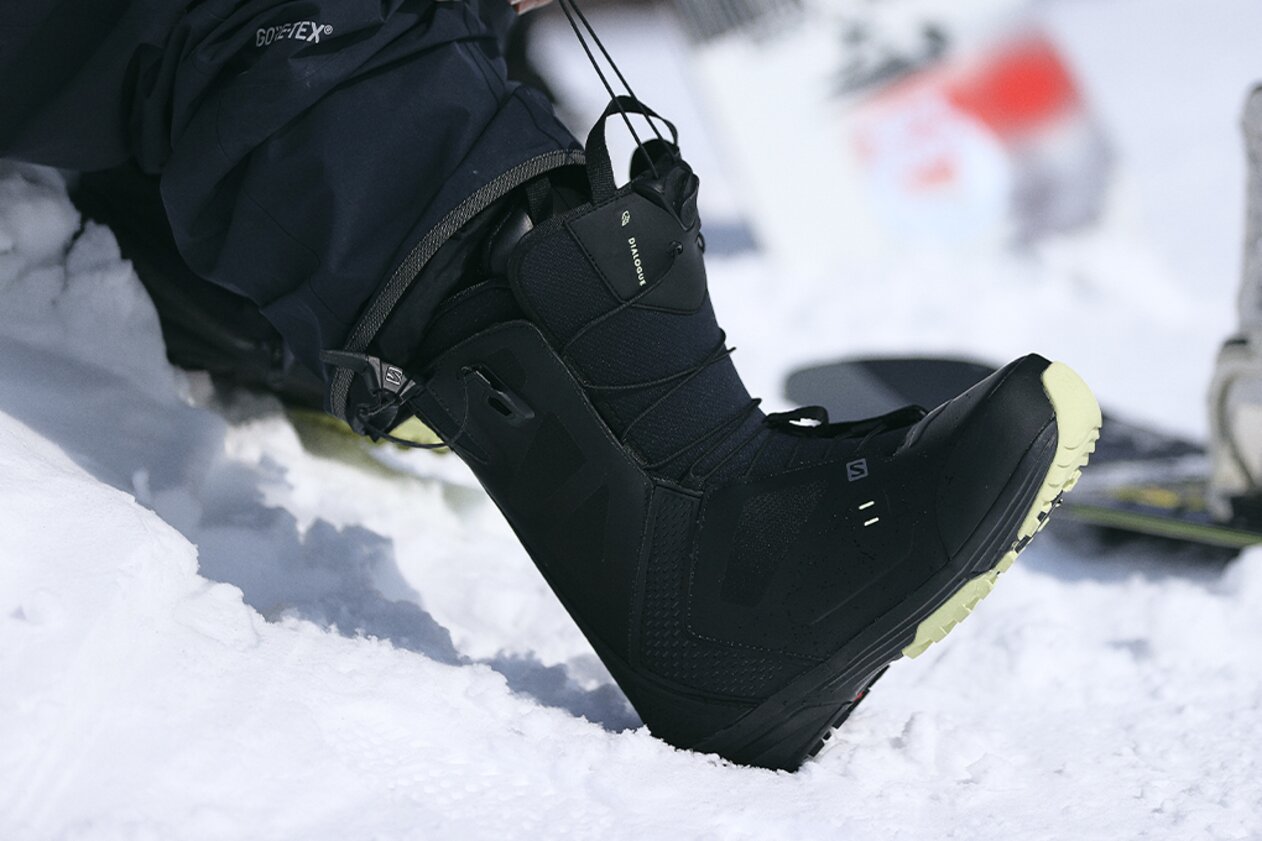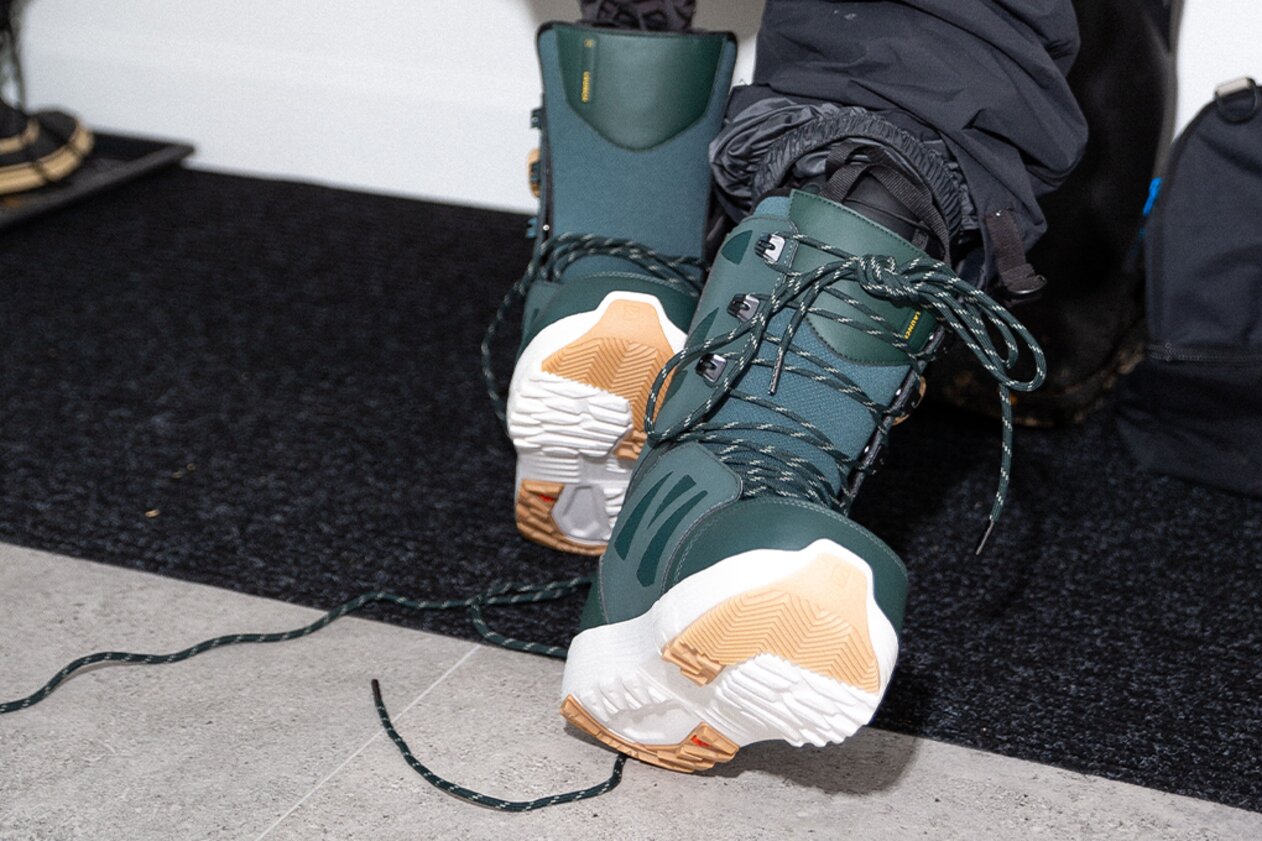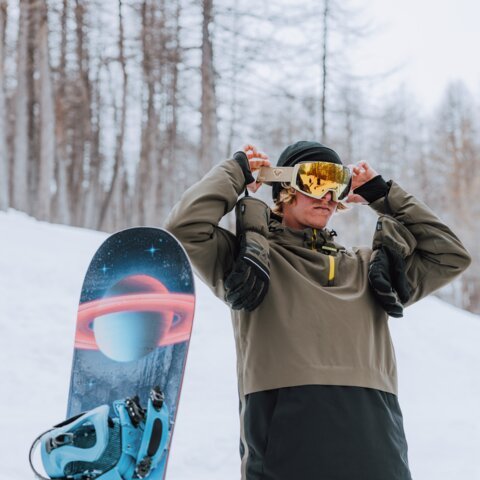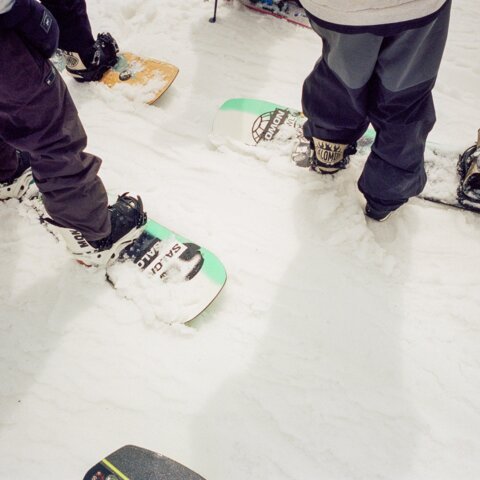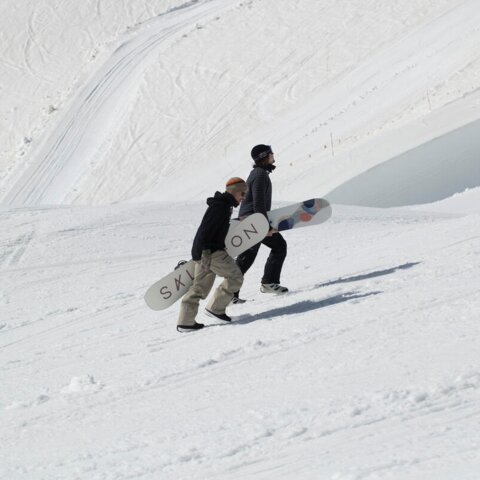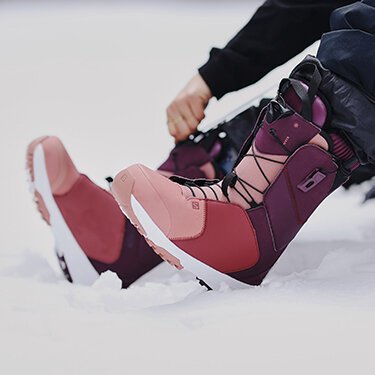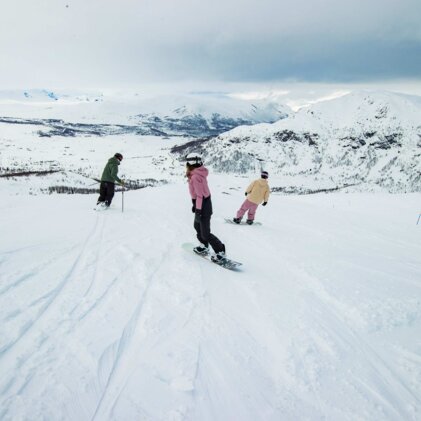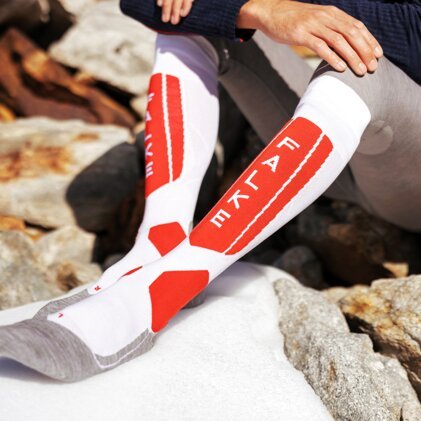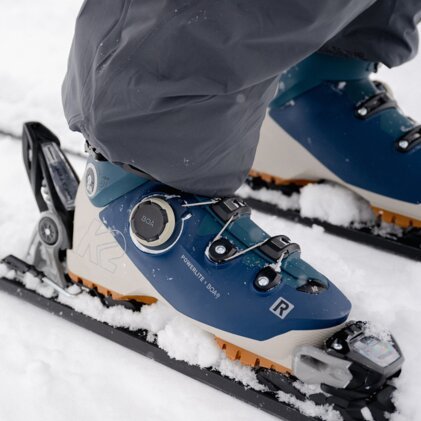Find snowboard boots that fit you and your riding style
*Advertisement
Buying snowboard boots sounds like a complicated undertaking? Not with INTERSPORT Rent! At our more than 800 shops worldwide, you can test latest-generation models and get one-to-one advice from real snowboard experts. For you, this means: Comfortable boots that allow you to safely handle every move – plus, the right snowboard and bindings, a helmet and clothing. Everything you need for a perfect winter day on the board!
But what types of snowboard boots are there, how do they differ, and what do you need to consider when trying them on? We’ve answered these questions together with our snowboard-crazy RENTertainers.
Why do snowboard boots have to fit perfectly?
Boots are just as much of a key part of your setup as the board and bindings. The perfect fit is crucial for how comfortable you feel when shredding – and how well you ride. Pressure points or too loose of a fit can quickly ruin your day on the slopes. An ill-fitting boot causes pain, negatively impacts your riding behaviour, and takes all the fun out of snowboarding.
Keep in mind: Your boots must be compatible with your snowboard bindings. Our RENTertainers will see at first glance whether that’s the case.
Soft boots or hard boots: the most important differences
Besides the right size, the distinction between soft and hard boots is crucial when choosing the perfect snowboard boots.
Soft Boots
Soft boots are very flexible and that makes them the more comfortable choice. Even though they are soft in contrast to hard boots – there are different degrees of hardness for soft boots. The term “flex” indicates how flexible a boot is. Flex levels range from 1 (soft) to 10 (hard).
Your skills and riding style determine how hard or soft your boots should be.
Here’s a rough classification:
- For beginners, freestylers & jibbers: soft (1 to 5)
lots of freedom of movement at the ankle, less grip - For all-mountain snowboarders: medium (4 to 7)
- For freeriders: hard (6 to 10)
high stability, good power transfer, more control
Hard Boots
Hard boots for snowboarders are similar in construction to ski boots. They have a hard shell and buckles, which makes the shaft inflexible. That means they provide extra support and stability along with maximum control and optimal power transfer, as direct pressure can be exerted on the edges.
It is precisely these properties that make hard boots a must-have for die-hard racers and carvers. You’re probably wondering now if hard boots are uncomfortable. Not if they fit well! If something still pinches, soft gel pads or specially adapted, thermoformable liners can help.
What does a snowboard boot consist of?
- Inner boot or liner: Liners feature soft padding and adapt to your foot. In some boots, you can remove them, in others, you can’t. For freestylers, liners with additional cushioning that absorbs hard landings have proven their merit many times over.
- Outer boot or shell: Where there is a liner, there is also a shell. That’s usually where the lacing is, or in the case of hard boots, where the buckles are.
- Lacing: Soft boots come with different lacing systems.
Which lacing systems are there?
- Traditional lacing: Normal laces offer maximum flexibility: You can tie them tighter or less tight at different points of the boot.
- Speed or quick-pull lacing: Thanks to quick-pull handles, the laces can be tightened and loosened with a flick of the wrist. There are also speed lacing systems that can be independently adjusted across the top of the foot and above the ankle.
- BOA® lacing: Turning instead of pulling is the motto of the BOA® lacing systems. The dials make it easy to open and close the laces even when wearing gloves. The system is super convenient and available with up to three lacing zones.
How do I find the right shoe size?
Basically, you choose the size of your snowboard boots according to your normal shoe size. You should always wear snowboard socks when trying them on. To find the right fit, we recommend the following: If your legs are stretched out, your toes may slightly graze the front of the boots. If you bend your knees a little, you should feel your toes pull back ever so slightly resulting in an optimal fit. Make sure that your heels do not have too much room to slide upwards in this position! Otherwise, you could end up with painful friction and foot cramps while riding.
